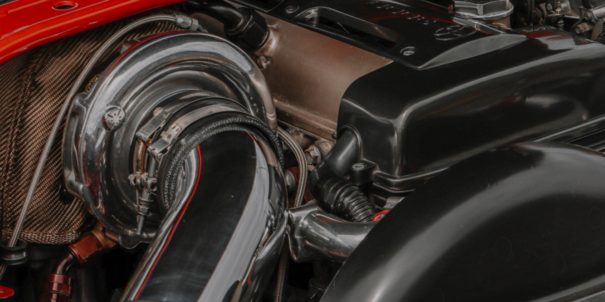A turbocharger and a supercharger are both forced induction systems that are used to increase the power output of an engine. However, there are several key differences between the two systems.
A turbocharger is a type of forced induction system that uses exhaust gases to power a turbine, which in turn drives a compressor that forces more air into the engine. The exhaust gas drives the turbine, which is connected to the compressor through a shaft. The compressor forces more air into the engine, which allows for a greater amount of fuel to be burned, resulting in more power. Because the turbocharger is powered by exhaust gases, it does not require any additional power from the engine to operate.
In contrast, a supercharger is a type of forced induction system that is driven by a belt connected to the engine. The belt drives a compressor that forces more air into the engine. Unlike a turbocharger, a supercharger does not rely on exhaust gases to operate, but instead uses engine power to drive the compressor. Because the supercharger is driven by the engine, it can provide an immediate boost in power, which makes it ideal for use in applications where rapid acceleration is required.
One of the main differences between a turbocharger and a supercharger is the way that they are powered. A turbocharger uses exhaust gases to drive the turbine, while a supercharger is driven by a belt connected to the engine. This means that a supercharger can provide an immediate boost in power, while a turbocharger may take a few seconds to spool up and start producing boost.
Another difference between the two systems is their efficiency. Because a turbocharger is powered by exhaust gases, it is able to extract more power from the engine than a supercharger, which uses engine power to operate. This means that a turbocharged engine will be more fuel-efficient than a supercharged engine.
A third difference between the two systems is their complexity. Because a turbocharger is powered by exhaust gases, it requires a more complex system of piping and components than a supercharger. This can make a turbocharger more expensive to install and maintain than a supercharger.
In conclusion, while both a turbocharger and a supercharger are forced induction systems that are used to increase the power output of an engine, there are several key differences between the two. A turbocharger uses exhaust gases to power a turbine, while a supercharger is driven by a belt connected to the engine. A supercharger can provide an immediate boost in power, while a turbocharger may take a few seconds to spool up. A turbocharger is generally more fuel-efficient than a supercharger, but also more complex and expensive to install and maintain. The choice between the two systems will depend on the specific application and the desired performance characteristics.

